
Please, support PV!
It allows to keep PV going, with more focus towards AI, but keeping be one of the few truly independent places.
It allows to keep PV going, with more focus towards AI, but keeping be one of the few truly independent places.
Nikon D5100 compared to Panasonic GH2
-
The Nikon D5100 DSLR was announced in April 2011, as a 16-megapixel APS-C prosumer camera priced midway between Nikon's D3100 and D7000 cameras. It combines the D7000's top-of-the line image sensor with the D3100's consumer-friendly controls and user interfaces. In addition, the D5100 provides two unique features that no other Nikon DSLR shares:
* A swiveling, side-hinged LCD screen with 920K pixels
* 1080p & 720p video at 24, 25, and 30fps, H.264 format
While the semi-pro D7000 provides numerous refinements for still photography, it lacks the D5100's 1080p25 and 1080p30 video modes, as well as its swiveling LCD screen. These omissions make the D7000 less well-adapted to DSLR video purposes than the D5100. However, the D5100 has its own shortcomings:
* Auto-focus works only with AF-S G-style lenses.
* Aperture can only be set in-camera, not by lens aperture ring.
* Manual exposure settings do not work for video recording.
* White balance cannot be manually set in Kelvin degrees.
Compared with the GH2, both D5100 and D7000 cameras lack several key features:
* No histogram display during video recording.
* No visible exposure meter in Live View mode.
* No 50/60fps video modes for slow motion.
* Each video recording is limited to 20 minutes.
* Firmware has not yet been hacked!
In most other respects, the D5100 works similarly to the GH2, and its 20Mbps, B-frame-enabled H.264 encoder produces image quality comparable to an unhacked GH2. On the surface, the D5100 would appear to be a high-quality, semi-automated DSLR that doesn't quite measure up to the GH2's video capabilities. In several respects, however, it surpasses the GH2's weak spots:
* Highest dynamic range of current crop-sensor DSLRs
* Lowest high-ISO noise of current crop-sensor DSLRs
* Imperceptible banding from 14-bit RAW image sensor
DxOMark test comparisons here:
http://www.dxomark.com/index.php/Cameras/Compare-Camera-Sensors/Compare-cameras-side-by-side/%28appareil1%29/698|0/%28brand%29/Nikon/%28appareil2%29/677|0/%28brand2%29/Panasonic/%28appareil3%29/630|0/%28brand3%29/Panasonic
One more notable feature: The D5100's Nikon AF-D lenses can be shared with the GH2.
It was this lens compatibility factor that led me to consider the D5100's merits as a backup video camera. For mobile filming purposes, I had built a pair of shoulder mount rigs with traditional follow focus and matte box. I quickly realized that Micro 4/3 and Canon FD still photography lenses are poorly suited for this purpose, and that for proper focus ring rotation with a follow focus, I needed to use Nikon F-mount lenses. I chose the following set of moderately-priced lenses, all of which have manual focus rings with hard stops and fixed outer lens barrels that neither extend nor rotate:
Rokinon/Samyang 35mm f1.4
Rokinon/Samyang 85mm f1.4
Tokina AT-X 235 Pro 20-35mm f2.8
Tokina AT-X 270 Pro 28-70mm f2.8
These lenses work beautifully with the GH2 in all but two situations - low-light video shooting and portrait photography. For that, I needed a camera with less noise at high ISO's and finer color depth than the GH2's 12-bit RAW image sensor. Hence, the Nikon D5100.
After using the D5100 along with my GH2 and GH1 for a while, I came to some general conclusions about their ISO settings. With video footage, I'm quite intolerant of high-ISO noise, and have placed strict limits on each camera's maximum usable ISO:
GH1: ISO 400 or less, 800 when desperate
GH2: ISO 800 or less, 1600 when desperate
D5100: ISO 1600 or less, 3200 when desperate
Recently I ran controlled high-ISO tests at 1080p24 on all three cameras mounted on a tripod. I used the same lens, the Tokina AT-X Pro 28-70mm f2.8, set at f11. To produce the same field of view on all three, I set the lens to about 50mm on GH1 and GH2, and to about 65mm on the D5100. On the GH1, I installed the 100Mbps Max Latitude Native 24p patch. On the GH2, I installed cbrandin's 66Mbps AQ2 patch. I used the light meter (set to sunlight) in each camera to set exposure at ISO 1600. This produced videos that were reasonably close in exposure levels. More significant variations were visible in the three camera's color balances, which I adjusted to match more closely in each camera (the GH1 really needs its green toned down to match the GH2). I then imported each video file into Premiere CS55.5 and combined them into the following video, with GH1, GH2, and D5100 clips in order:
I also exported a still frame from each clip, which I center-cropped at 100% resolution:

 GH1 ISO 1600.jpg1280 x 720 - 347K
GH1 ISO 1600.jpg1280 x 720 - 347K
 GH2 ISO 1600.jpg1280 x 720 - 376K
GH2 ISO 1600.jpg1280 x 720 - 376K
 D5100 ISO 1600.jpg1280 x 720 - 358K
D5100 ISO 1600.jpg1280 x 720 - 358K -
I also ran the test above at ISO 3200 on the GH2 and the Nikon D5100. (The GH1 only goes as high as ISO 1600.) While the D5100 works at ISO 6400 and even higher, its noise levels above ISO 3200 increase noticeably. The results of this test show visible differences in noise performance at ISO 3200 between the GH2 and D5100:
And here are still frames from each clip:
 GH2 ISO 3200.jpg1280 x 720 - 395K
GH2 ISO 3200.jpg1280 x 720 - 395K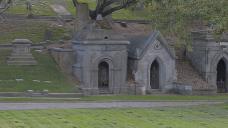
 D5100 ISO 3200.jpg1280 x 720 - 354K
D5100 ISO 3200.jpg1280 x 720 - 354K -
The most controversial aspect of the Nikon D5100's video capabilities is its lack of manual exposure settings. Although videos can be recorded in Manual exposure mode, the camera will silently override the manual shutter speed and ISO settings with its own auto-exposure settings. When shooting video, the D5100 operates very much like the GF1 did before Vitaliy hacked that camera to enable its Manual controls. This has led YouTube pundits to proclaim the D5100 useless for serious video work.
After investigating this matter, I concluded that even if manual settings were available, the D5100's Manual exposure mode still wouldn't be useful for shooting video. Here's why:
* The D5100 doesn't show an exposure histogram in Live View video modes.
* Manual mode doesn't display Live View images at actual exposure levels on the LCD.
Without a histogram or WYSIWYG display, there is no reliable way to determine correct manual exposure. The bottom line is that you must rely on the camera's light meter to set correct video exposure for you. As a result, it's best to shoot in Aperture Priority mode, where you can visually confirm exposure levels on the LCD, and use auto-ISO to set exposure. Once you understand how Nikon cameras work in auto-ISO mode, their semi-manual approach to setting exposure makes sense, and is actually very convenient. After shooting several hours of footage, I've come to prefer it to conventional manual controls. Here's how to set up the D5100 for video shooting:
In the ISO Sensitivity Settings sub-menu:
Auto ISO Sensitivity Control: ON
ISO Sensitivity: 100 (set to lowest ISO you want the camera to use)
Maximum Sensitivity: 3200 (set to max ISO you want the camera to use)
Minimum Shutter Speed: 1/60 (preset to your desired shutter speed)
The twist here is that you use Minimum Shutter Speed to manually preset the video shutter speed you want the camera to use. Since I always shoot at 1/60, I've only needed to set this once. The camera then uses its light meter to automatically set exposure with an ISO between the (minimum) ISO Sensitivity and Maximum Sensitivity presets. However, if the required ISO for a scene lies outside your preset ISO range, the camera will override your Minimum Shutter Speed preset. If shutter speed is too slow, I use the Exposure Compensation button to lower exposure until the shutter speed is boosted back up to my preset speed. Once all settings look good, I use the Exposure Lock button to keep the exposure fixed during your shot.
While this may sound convoluted, it gives you just as much control over exposure as Manual mode would. Here's how you use it in practice:
1. Set your desired aperture.
2. If you prefer, adjust focus in viewfinder.
3. Enter Live View mode and confirm focus.
4. If needed, use Exposure Compensation to set desired shutter speed.
5. Press Exposure Lock button.
6. Press Video Record button to start filming. -
-
The Nikon D5100 is pretty impressive. I have a lot of nightclub dinner theater work and i'm trying to find a camera that is great in low light. Do you think the D5100 would be a good candidate?
-
@Aria
Yes, low-light conditions are exactly where the D5100's wide dynamic range and low noise performance make a perceptible difference. For this purpose you'll want either a fast f2.8 zoom or a set of even faster prime lenses. In addition to the lenses I noted in my initial post, Nikon's AF-S 35mm f1.8 lens auto-focuses on the D5100 and is a terrific value at only $200 new. -
ISO 800 is also my redline on the GH2.
-
Interesting.
Ok for the high isos, but the images from the d5100 look very ugly and unpleasant: oversharpened, low detailed, with weird color balance and bad gradation. Definitely worst than gh1 to eyes. -
@Elenion
To evaluate the fine distinctions between the three cameras, I highly recommend downloading the original video file from my Vimeo page. Vimeo's online compression obscures many of the details. -
I did it, i also look at color informations with photoshop and luma channel and i really can't see how the two cameras could be compared. Of course better performance for the d5100 at high isos but i'd prefere the sonys for this. What do you think?
-
Here are two magnifications.

 d5100.jpg1024 x 654 - 130K
d5100.jpg1024 x 654 - 130K
 gh2.jpg1024 x 654 - 136K
gh2.jpg1024 x 654 - 136K -
@Elenion
The Nikon D5100's color balance is closer to what the scene actually looked like. The GH1, and to a lesser extent the GH2, produce a more impressionistic rendition. With a bit of grading, I could pull up the green in the D5100 and tweak the shades to match the GH2 pretty well. The GH1 favors green so strongly that it can't readily be matched to the other two cameras. It would be easier to tint the GH2 and D5100 green to match the GH1.
I picked this scene with an eye for its extraneous foliage detail, which tends to starve the macroblock bit allocations for the flat concrete tones on the mausoleum walls. This was intended to expose any weakness in the D5100's encoder, which has only 20Mbps to work with. The GH1, however, lacks H.264 B-frames, which puts it at a perceptible disadvantage, even with its 100Mbps bandwidth. The GH2 should have the advantage here, but its relatively high noise levels probably leech off much of its 66Mbps bitrate.
I see what you mean by the D5100's sharp edges in your magnified crops. For this test, I left all three cameras' Sharpening levels at their default midpoint settings. Based on your findings, I'll see if I can reduce the sharpening on the D5100 to match the GH2.
Also, if you look closely in the magnified crops at the tree trunk and horizontal concrete curb, the D5100 color shades are noticeably more consistent than the mottled tones of the GH2. The D5100's 14-bit image sensor probably gives it an advantage here. -
@LPowell
Actually it is a matter of color information, In green and red channels the difference between the gh2 and d5100 is the same that between a FHD cam versus a LD cam. The blue channel has less differences and this is why the d5100 looks more magenta (or the gh2 less magenta). You can't reproduce color informations by pulling the saturation. In this the d5100 has a huge disadvantage.
I attach the green channel
As you can see in the d5100 green channel, the resolution is poor, the gradation is fuzzy and many areas are broken (black and white areas)
 Gd5100.jpg1024 x 654 - 137K
Gd5100.jpg1024 x 654 - 137K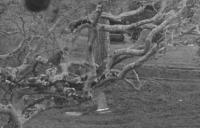
 GGH2.jpg1024 x 654 - 113K
GGH2.jpg1024 x 654 - 113K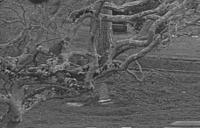
 GD5100.jpg1024 x 654 - 118K
GD5100.jpg1024 x 654 - 118K -
@Elenion
As you first pointed out, the D5100 green channel looks oversharpened. That makes edge contrast much higher, even though the histograms of the two images are similar in overall contrast range. There are also some scattered macroblock edges present in the D5100 image due to its low bitrate. -
Update: I conducted another round of tests, reevaluating the color balance of the GH1, GH2, and D5100. Using the GH2 as the standard, I settled on the following Film Mode settings:
Smooth
Contrast -2
Sharpness -2
Saturation -1
Noise Reduce -2
I then adjusted GH1 and D5100 settings for a close match to the GH2, and reshot my original test footage. The following sample clip shows comparable exposure and noise levels from the GH1 @ ISO 800, GH2 @ ISO 1600, and D5100 @ ISO 3200.
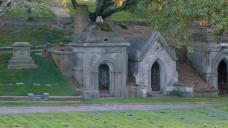
 GH1 ISO 800.jpg1280 x 720 - 359K
GH1 ISO 800.jpg1280 x 720 - 359K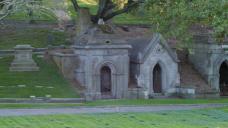
 GH2 ISO 1600.jpg1280 x 720 - 361K
GH2 ISO 1600.jpg1280 x 720 - 361K
 D5100 ISO 3200.jpg1280 x 720 - 318K
D5100 ISO 3200.jpg1280 x 720 - 318K -
GH1, GH2 & D5100 ISO Equivalencies
Among the three cameras, the GH2's ISO calibration comes the closest to being accurate. The GH1's ISO settings are about 2/3-stop lower than actual, and the D5100's ISO settings are about 1/3 stop higher than actual. Yes, that literally means that GH1 ISO 400 = D5100 ISO 800:
GH1 ..GH2 ..D5100
........ ........ ..100
..100 ..160 ..200
..200 ..320 ..400
..400 ..640 ..800
..800 1250 1600
1600 2500 3200
This chart also makes it clear why Panasonic set the GH2's lowest ISO at 160 - they were simply correcting the GH1's inaccurate ISO calibration. It also hints at the D5100's most spectacular hidden feature - its phenomenal dynamic range at what it modestly labels "ISO 100". Take a look at the following charts:
http://www.sensorgen.info/PanasonicDMC-GH1.html
http://www.sensorgen.info/PanasonicDMC_GH2.html
http://www.sensorgen.info/NikonD7000.html
The key specs to take note of are in the Saturation (e-) column. This is literally how many electron-volts each photo detector in the image sensor can collect before it saturates at each ISO level. For the GH1 @ ISO 100, saturation is at about 19000 eV, and likewise for the D5100 @ ISO 200 (this is the technical basis for the ISO chart above).
Now check out the D5100 @ ISO 100: 49000 eV!! Not only that, but the D5100's Read Noise is down at 3eV, giving it a best-case dynamic range of 14 stops. At their lowest ISOs, the GH1 and GH2 have twice as much noise, for a best-case dynamic range of about 11 stops. The D5100's 3-stop advantage in dynamic range at ISO 100 makes it, along with the Nikon D7000, the reigning high-contrast champions of DSLRs.
-
Excellent testing, the D5100 is a little cracker of a camera - if not a little idiosyncratic. That's phenomenal DR and noise floor.
Would be nice if it was a little more shooter friendly though. What's the aliasing and moiré like on the D5100? -
@LPowell
In regard to the tests- Are the GH2 samples taken with stock firmware...?
And what is the Nikon like in relation to bit rate?
I hope that we are not beginning to conclude that the Nikon trumps the GH2... :(
(maybe for high iso) -
@alcomposer
The GH2 clips were taken with cbrandin's 66Mbps AQ2 patch. The Nikon D5100 has a B-frame-enabled H.264 encoder that runs at 20Mbps max.
I haven't yet seen any noticeable aliasing or moire on the D5100, but from Zacuto's 2011 Shootout tests, I expect it's similar to a Canon 7D.
While an unhacked GH2 falls a bit behind the D5100, that's mainly due its low noise and high dynamic range. At 66Mbps and beyond, the GH2 is in a class shared only with the GH1, but if the D5100 (or D7000) were someday hacked... -
@alcomposer
lpowell isnt saying the d5100 is better then the gh2, hes only comparing the two in terms of noise levels, and the d5100 is very good at high iso, watch how bad it makes a t3i look here but there is more to a camera then noise levels, and the gh2 at higher bitrates performs great at high iso and produces a very nice filmic grain that i personally love, it really is a look all its own. -
Lpowell , Would love to see how iso 100 looks on the D5100 (and the 14 stops of DR)..thanks for the test!
-
Forgive me for the cross posting (don't know where I found this- probably here!)
But I was a bit worried...
Now cool!
-
Well the d5100 shows a really good dr. I think that 14 stops is related to the picture mode, but the results in dr for video mode are still excellent.
-
Here is a maximum-contrast video composed of clips from each of the three cameras at their minimum ISO: GH1 @ ISO 100, GH2 @ ISO 160, and D5100 @ ISO 100. This scene was shot in the midday sun for maximum contrast.
I then extracted 200% magnified (nearest-neighbor) crops from each clip and boosted the gamma to bring out the shadow details. The fourth image is a 16-megapixel full-resolution cropped still photo taken by the D5100, which I've included for comparison.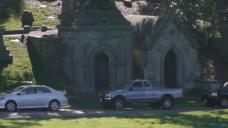
 GH1 Gamma 8.jpg1920 x 1080 - 328K
GH1 Gamma 8.jpg1920 x 1080 - 328K
 GH2 Gamma 8.jpg1920 x 1080 - 369K
GH2 Gamma 8.jpg1920 x 1080 - 369K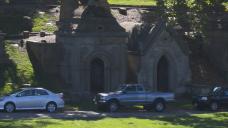
 D5100 Gamma 8.jpg1920 x 1080 - 405K
D5100 Gamma 8.jpg1920 x 1080 - 405K
 Still frame Gamma 8.jpg1920 x 1080 - 378K
Still frame Gamma 8.jpg1920 x 1080 - 378K -
so the nikon is bettar than panny you try to say? jajajaaj
and also soft image of gh2
LPowell -
LOL
Start New Topic


Howdy, Stranger!
It looks like you're new here. If you want to get involved, click one of these buttons!
Categories
- Topics List23,909
- Blog5,716
- General and News1,330
- Hacks and Patches1,148
- ↳ Top Settings33
- ↳ Beginners254
- ↳ Archives402
- ↳ Hacks News and Development56
- Cameras2,342
- ↳ Panasonic984
- ↳ Canon118
- ↳ Sony154
- ↳ Nikon95
- ↳ Pentax and Samsung70
- ↳ Olympus and Fujifilm98
- ↳ Compacts and Camcorders295
- ↳ Smartphones for video96
- ↳ Pro Video Cameras191
- ↳ BlackMagic and other raw cameras116
- Skill1,959
- ↳ Business and distribution66
- ↳ Preparation, scripts and legal38
- ↳ Art149
- ↳ Import, Convert, Exporting291
- ↳ Editors190
- ↳ Effects and stunts115
- ↳ Color grading197
- ↳ Sound and Music280
- ↳ Lighting96
- ↳ Software and storage tips266
- Gear5,407
- ↳ Filters, Adapters, Matte boxes344
- ↳ Lenses1,577
- ↳ Follow focus and gears93
- ↳ Sound496
- ↳ Lighting gear313
- ↳ Camera movement230
- ↳ Gimbals and copters302
- ↳ Rigs and related stuff271
- ↳ Power solutions83
- ↳ Monitors and viewfinders339
- ↳ Tripods and fluid heads139
- ↳ Storage286
- ↳ Computers and studio gear559
- ↳ VR and 3D248
- Showcase1,859
- Marketplace2,834
- Offtopic1,314










